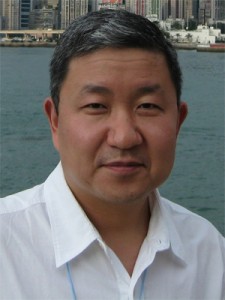Xinwei Wang, professor of mechanical engineering, has been elected a fellow of the American Society of Mechanical Engineers (ASME) for his contributions in the fields of micro/nanoscale thermal probing and characterization, and laser-material interaction.
Members of ASME are eligible for fellowship after 10 years of practice in the field of mechanical engineering and 10 years of corporate membership in the society. ASME has more than 130,000 members in 150 countries and holds more than 30 technical conferences annually.
Wang has been a member of ASME for 15 years. He has given invited talks at conferences and helped organize conferences in the areas of thermal science and heat transfer.
One of Wang’s newest areas of research is thermal/electrical transport in metallic films. His work has focused on films as thin as the width of three atoms. “It’s a very exciting area, and we have been published in several very good papers for this project,” Wang said.
Wang has also developed new techniques for thermal characterization at the micro/nanoscale. This research can be used for a wide variety of applications, such as measuring thermal conductivity in textiles.
“Firefighters want material that has very low thermal conductivity, but for comfortable clothes in the summer, you want something that quickly conducts body heat away,” Wang said.
A longtime research area for Wang has been laser-material interaction. This is mainly divided into two categories: simulation, which focuses on describing how a laser interacts with the material it comes into contact with, and experiments in nanomanufacturing. Nanomanufacturing involves using special techniques to focus light on a spot as small as 10 nanometers. To put that into perspective, 1,000 nanometers equal 1 micron, and one micron is about 1/60 the width of a strand of human hair. These techniques can be used to make nanopatterns for structures that will go into devices and sensors.
One of Wang’s new projects, started in late December of last year, is investigating thermal transport in nuclear materials. The project, which is a collaboration with the Idaho National Laboratory, will last three years and is being funded by the Department of Energy. The research will focus on achieving in-pile characterization for monitoring the evolution of thermal properties, in order to optimize fuel designs that offer improvements in safety and efficiency.
“That’s a new area and it’s very exciting. It can really give some new directions for the lab to go,” Wang said.
Wang has authored 88 articles in highly visible journals, one book, and three book chapters.
